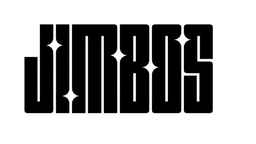7 Mistakes People Make With Cut & Finish Pads (And How to Fix Them)
The Cut & Finish Pad is one of the most versatile tools in paint correction—but like any tool, technique matters. If you’re not getting the finish you expect, here are 7 common mistakes to avoid.
1. Using Too Much Product
More polish doesn’t mean more correction. Overloading the pad causes dusting, smearing, and inconsistent results. Start with 4 small drops of Picture Perfect Polish and reapply only as needed.
2. Not Cleaning the Pad Often Enough
As you polish, the pad loads with paint residue and polish. This reduces cut, increases heat, and can mar the finish. Clean your pad after every panel using compressed air or a pad brush.
3. Using Too Much Pressure
Let the polish and pad do the work. Excess pressure can distort the pad, leave buffer trails, and make it harder to finish clean—especially on black or soft paint.
4. Working Too Large of an Area
Don’t rush it. Keep your polishing area around 2' x 2' or smaller. Trying to stretch product across a large panel usually means poor correction and uneven finish.
5. Not Priming the Pad
Use your first few drops of polish to spread evenly across the pad before you start polishing. This helps prevent dry contact and boosts consistency on the first pass.
6. Polishing Too Long
Overworking the polish can lead to hazing or dried-out residue. With Picture Perfect Polish, 3–4 slow, overlapping passes is usually enough to cut and finish in one step.
7. Using the Wrong Speed
- DA Polisher: Stick to speed 4–5 for correction, lower if you’re chasing gloss
- Rotary: Stay between 1000–1400 RPM with light pressure
Too fast or too slow can either undercut or burn the polish. Match your speed to your paint system and tool.
Bonus Tip: Use the Right Polish
The best results with a cut & finish pad come when it’s paired with a polish designed to match. Picture Perfect Polish is made to cut and finish in one pass—no dust, no fillers, no cleanup headaches.
Related Posts
Frequently Asked Questions
Why is my cut & finish pad leaving haze?
You may be using too much pressure, not cleaning the pad, or overworking the polish. Lighten up and reduce your section size.
Can I fix haze without redoing the whole car?
Yes—rewipe with panel prep, then do a quick final pass using low pressure and a clean pad or soft foam finishing pad if needed.
How often should I clean the pad while polishing?
Every 1–2 panels. Even the best pad loses performance when saturated with residue. A quick blowout keeps it working like new.
What polish works best with a cut & finish pad?
Picture Perfect Polish. It adapts to pressure and machine type, and finishes beautifully in one step—even on black paint.



